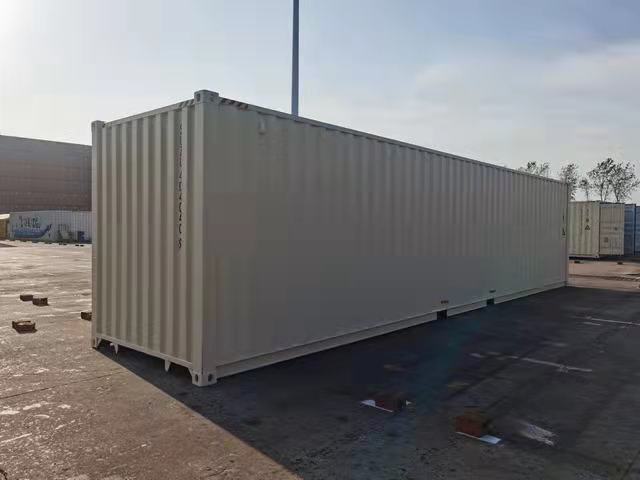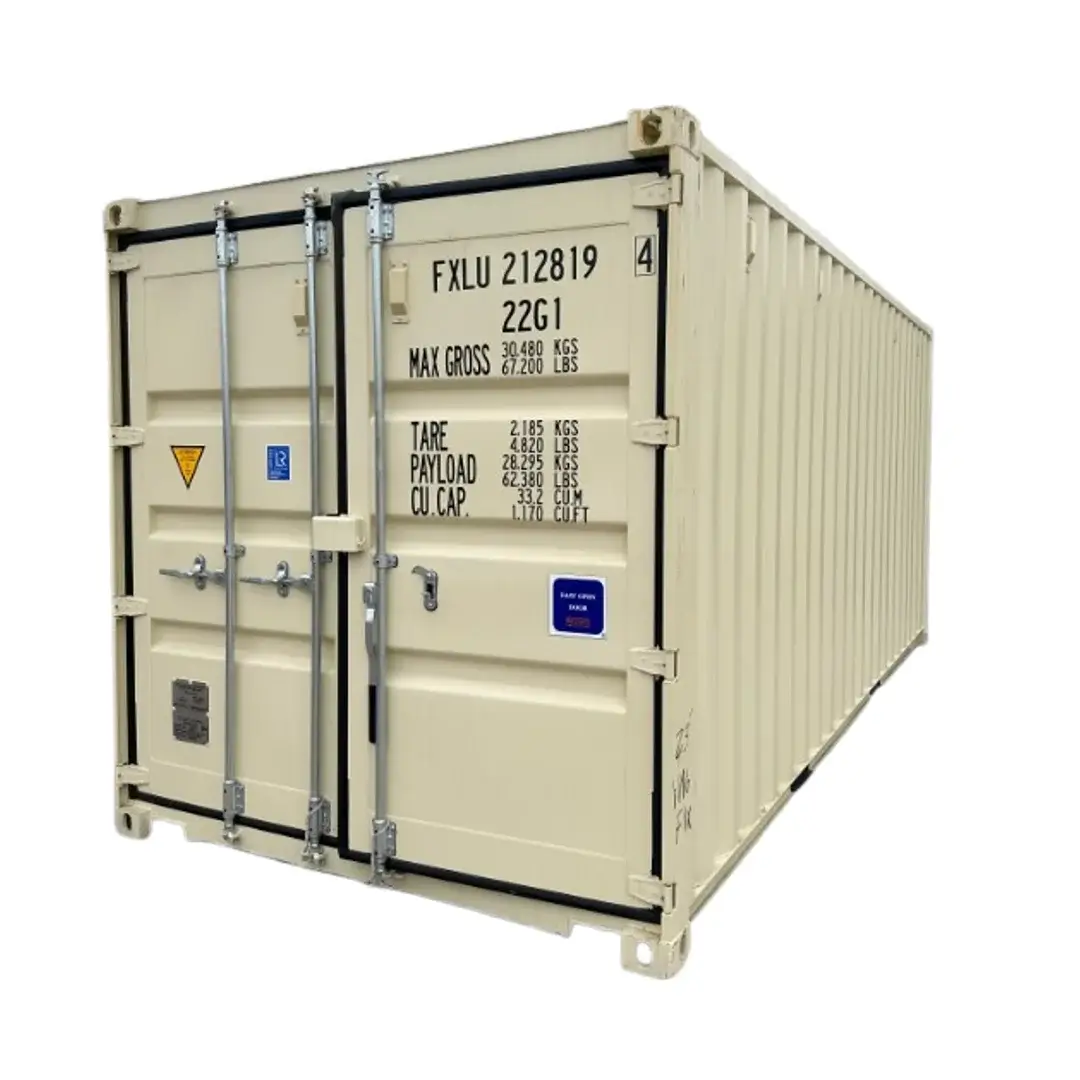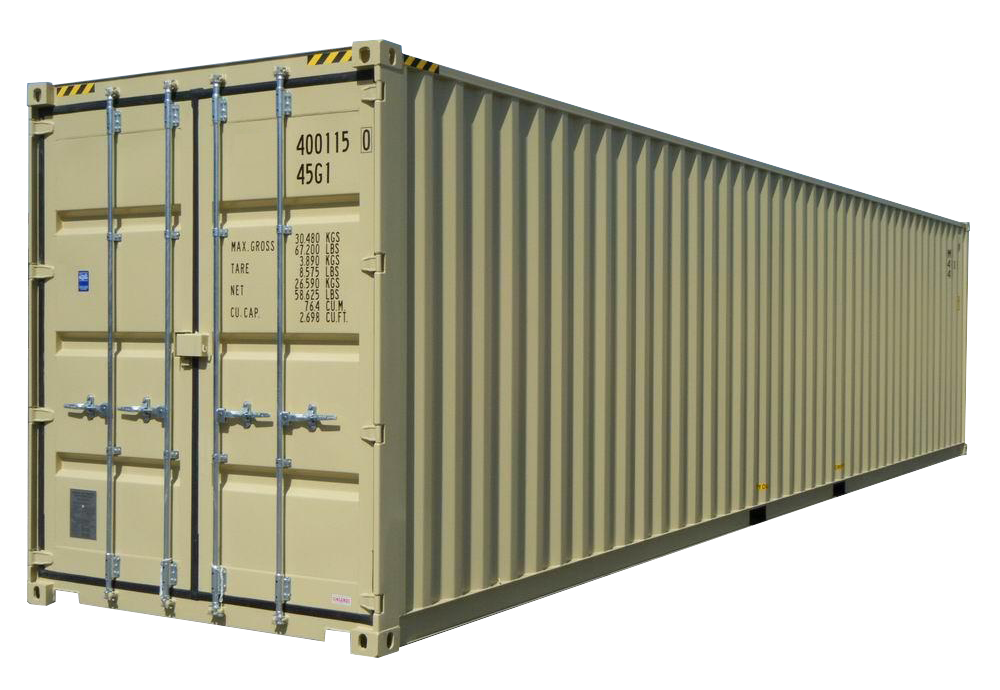How to Shop New Shipping Container 40 x 8 x 9.6 for Customized Office Spaces
How to Shop New Shipping Container 40 x 8 x 9.6 for Customized Office Spaces
Blog Article
The Ultimate Overview to Choosing the Right Shipping Container for Your Requirements
When it comes to picking the ideal delivery container, understanding your certain demands is essential. You'll want to take into account variables like dimension, type, and material to guarantee you make the very best choice. From basic sizes to specialized choices, there's a great deal to check out. Plus, budgeting for both the container and any type of alterations can make a large difference. Allow's damage down the crucial aspects to aid you locate the ideal fit for your needs.
Understanding Delivery Container Sizes
When you're selecting a delivery container, understanding the various sizes offered is critical for making the best decision. Shipping containers typically come in typical sizes of 20 and 40 feet, however you'll also discover various other dimensions. Knowing the size you need depends on what you prepare to store or transport.If you're moving smaller products, a 20-foot container could be perfect, while larger shipments typically require a 40-foot container. The height can likewise vary; high dice containers provide additional upright space, which can be beneficial for taller goods.Before choosing, gauge your freight, and think about how much space you'll require for packing and unloading. Constantly consider potential future demands-- choosing for a slightly bigger container might save you problem down the line. Inevitably, selecting the best size will certainly enhance effectiveness and assure your things are safe throughout transportation
Kinds Of Delivery Containers Available
There are a number of kinds of delivery containers available, each made for certain objectives and cargo demands. The basic dry container is versatile, excellent for basic cargo. If you're shipping perishable goods, consider a cooled container, which maintains a controlled temperature. For extra-large items, high cube containers use added elevation, suiting taller loads.If you need to move heavy equipment or tools, level rack containers offer a sturdy base without wall surfaces. Open-top containers permit for easy loading of tall freight, with a detachable tarp covering for security. If you're looking for flexibility, consider a collapsible container that can be quickly kept when not in use.Lastly, specialized containers like container containers are utilized for fluids, while vented containers are designed for bulk cargo that needs air flow. Recognizing your cargo type will certainly assist you select the ideal container to fulfill your shipping requires effectively.
Material Factors To Consider for Longevity
When choosing a delivery container, the product plays an essential function in its durability. You'll wish to weigh the benefits of steel versus aluminum, specifically relating to corrosion resistance. Understanding these elements can aid you make a more informed choice for your shipping needs.
Steel vs. Light weight aluminum Containers
Just how do you pick between steel and light weight aluminum containers for your shipping requires? Beginning by thinking about resilience. Steel containers are durable and offer excellent toughness, making them suitable for hefty lots and severe conditions. They stand up to damages from influences and are often cheaper, which can be a major aspect for budget-conscious buyers.On the other hand, aluminum containers are light-weight, which can conserve you on delivery costs. They're much easier to steer and are an excellent choice if you require to carry items frequently. Light weight aluminum is generally extra costly and much less robust than steel. Consider your particular demands thoroughly, including weight, cost, and the type of cargo you'll be shipping, to make the ideal choice for your situation.
Deterioration Resistance Aspects
Picking the appropriate product doesn't just entail weight and cost; rust resistance plays a significant function in resilience. When choosing a delivery container, take into consideration the setting it'll deal with. Steel containers, while solid, can corrosion otherwise appropriately dealt with. Seek options with protective finishes or galvanization to boost their life expectancy. Light weight aluminum, on the other hand, provides all-natural deterioration resistance, making it optimal click for more info for seaside locations or humid problems. However, it can be extra pricey. Furthermore, assess the container's use-- if it'll be subjected to chemicals or extreme weather condition, prioritize materials that can endure these problems. Investing in a corrosion-resistant container currently can save you from costly repair work or substitutes down the line. Choose sensibly for lasting advantages.
Modifications and Personalization Options
Shipping containers aren't simply for delivering products; they can be changed to satisfy your specific demands through different alterations and customization alternatives. You can transform a standard container into a relaxing workplace, a temporary retail shop, or perhaps a personal gym. The opportunities are almost endless.Think regarding adding windows, insulation, or air flow to enhance comfort. You might likewise take into consideration electric circuitry, plumbing, and even customized shelving to enhance capability. If security's a worry, reinforced locks can supply tranquility of mind.For aesthetic appeal, you can paint the container or add a special design to make it stand out. Don't forget flooring options-- whether you want durable plywood or something extra innovative, it can raise the space.Ultimately, customizing your shipping container to match your demands can boost use and develop a special atmosphere that shows your design.
Analyzing Your Transportation Requirements
When it concerns using your changed shipping container, recognizing your transport requires is vital. Beginning by establishing what you'll be delivery-- whether it's heavy tools, retail goods, or personal items. Each sort of cargo has various requirements relating to dimension, weight, and accessibility.Next, take into consideration the range and setting of transport. Are you shipping locally, across the country, or worldwide? This influences the container's style and capability. If you're using trucks, ensure your container fits conventional measurements for simple loading and unloading.Additionally, assume concerning transportation conditions. Will your things need unique security from climate or temperature level fluctuations? If so, you could need insulation or air flow functions in your container.Lastly, analyze how commonly you'll be carrying products. Frequent shipments might require a more durable and versatile container to meet recurring demands. By dealing with these variables, you'll be well-prepared to select the ideal delivery container for your needs.
Budgeting for Your Delivery Container
Setting an allocate your shipping container is crucial for ensuring a smooth purchasing process. Identify exactly how much you can afford to spend. Maintain in mind that costs can differ significantly based on dimension, problem, and kind. New containers generally set you back more, but made use of ones can provide substantial savings.Next, think about any type of additional costs you could sustain, such as transport fees, shipment costs, and adjustments. If you prepare to personalize the container, consider those costs too. Study various suppliers to compare costs and discover the most effective deal that meets your needs.Don' t neglect to include any permits or policies that may use to your acquisition and usage of the container. By plainly this post detailing your spending plan, you'll be better prepared to make educated choices, ensuring you get the appropriate container without breaking the financial institution.
Upkeep and Treatment for Longevity
To assure your delivery container lasts for several years, routine upkeep is essential. Start by inspecting the exterior for rust, dents, and damages. If you detect any type of issues, address them right away to stop more degeneration. Tidy the container periodically, both throughout, to eliminate dust, debris, and wetness that can result in corrosion.Ensure the doors seal properly and lube the joints to avoid rust and sticking. If you're making use of the container for storage, consider adding ventilation to read more lower moisture and mold and mildew development. For additional security, apply a rust-inhibiting paint or sealer annually.If your container's located in a rough atmosphere, like seaside locations, you could require to boost maintenance frequency. Keep an eye on the flooring, also; any kind of signs of wear should be repaired right now. With these easy actions, you'll prolong the life of your shipping container substantially.
Often Asked Questions
Exactly how Do I Find a Trusted Delivery Container Vendor?
To discover a dependable shipping container provider, start by researching on the internet reviews, asking for recommendations from friends or sector get in touches with, and contrasting prices. Always inspect their credentials and assurance they use high quality containers that fulfill your demands.

Can I Rental Fee a Delivery Container Instead of Purchasing?
Yes, you can certainly rent a delivery container rather than acquiring one. Many suppliers supply rental options, which can conserve you cash and offer versatility if you only need it for a brief period.
What Allows Are Required for Container Positioning?

Are Shipping Containers Weatherproof and Appropriate for Outdoor Storage?
Yes, shipping containers are normally weatherproof, developed to stand up to severe conditions. Their durable building maintains your products safe and secure and dry, making them ideal for outside storage space. Simply ensure appropriate air flow to avoid moisture build-up inside.
How Do I Carry a Shipping Container When Purchased?

Report this page